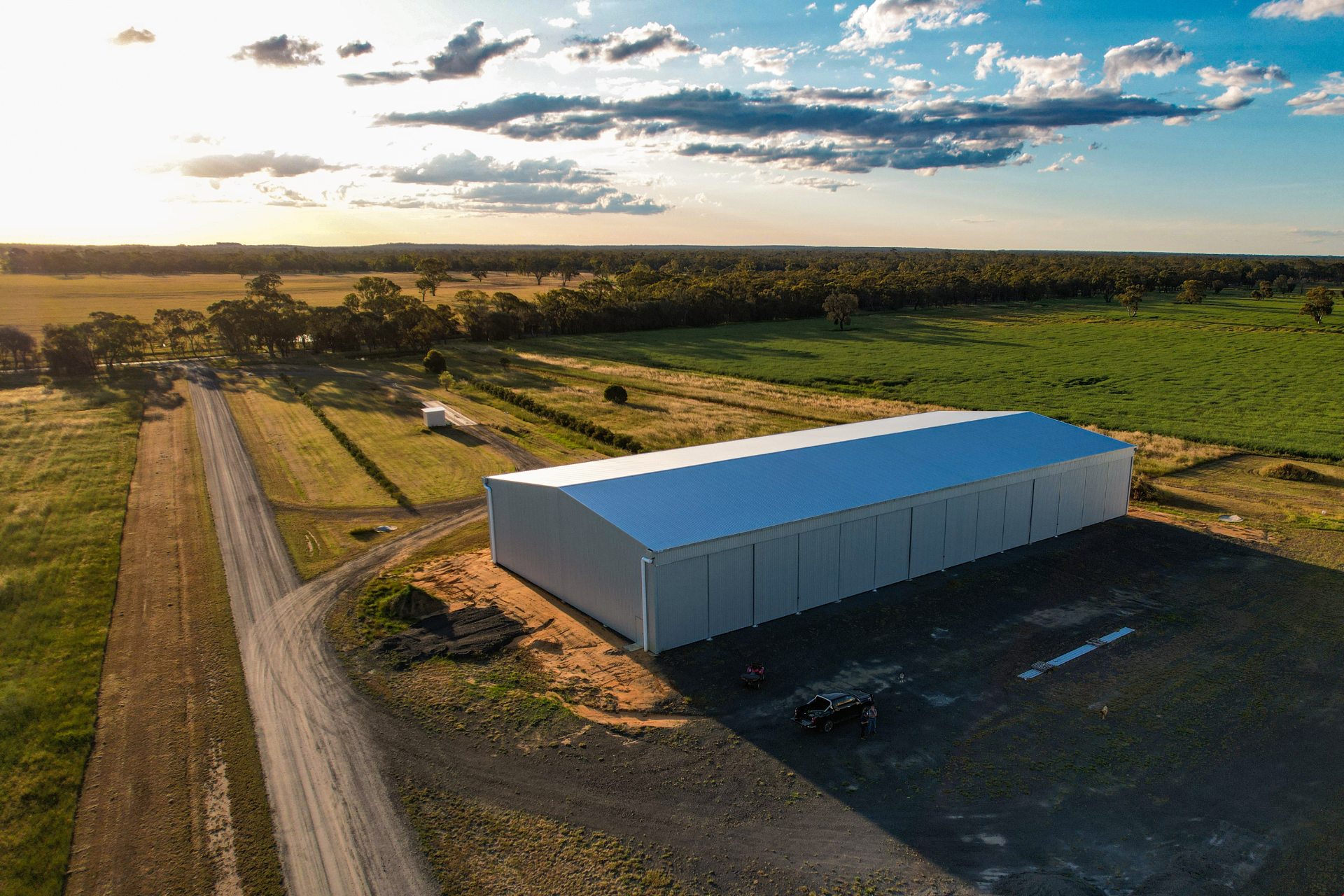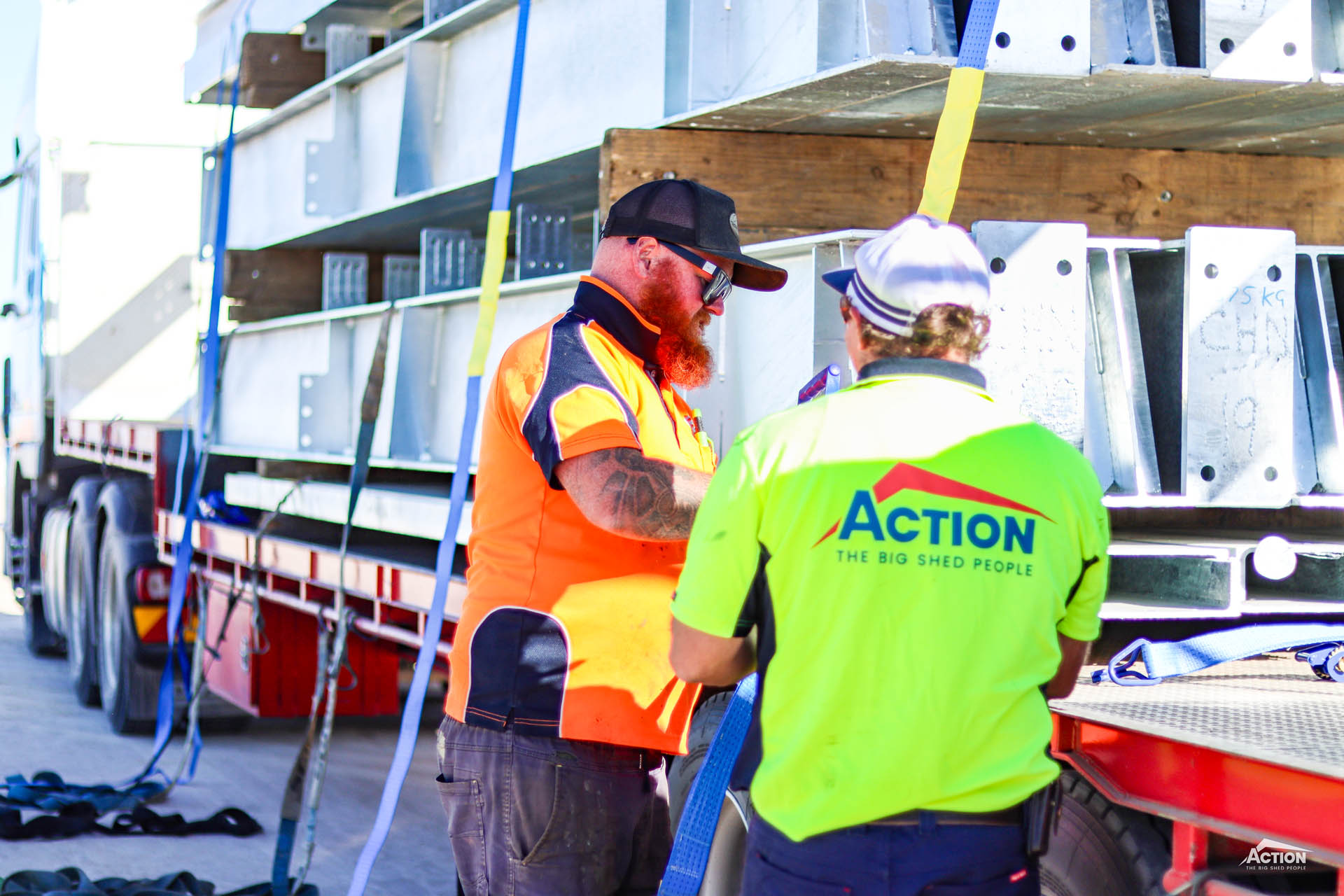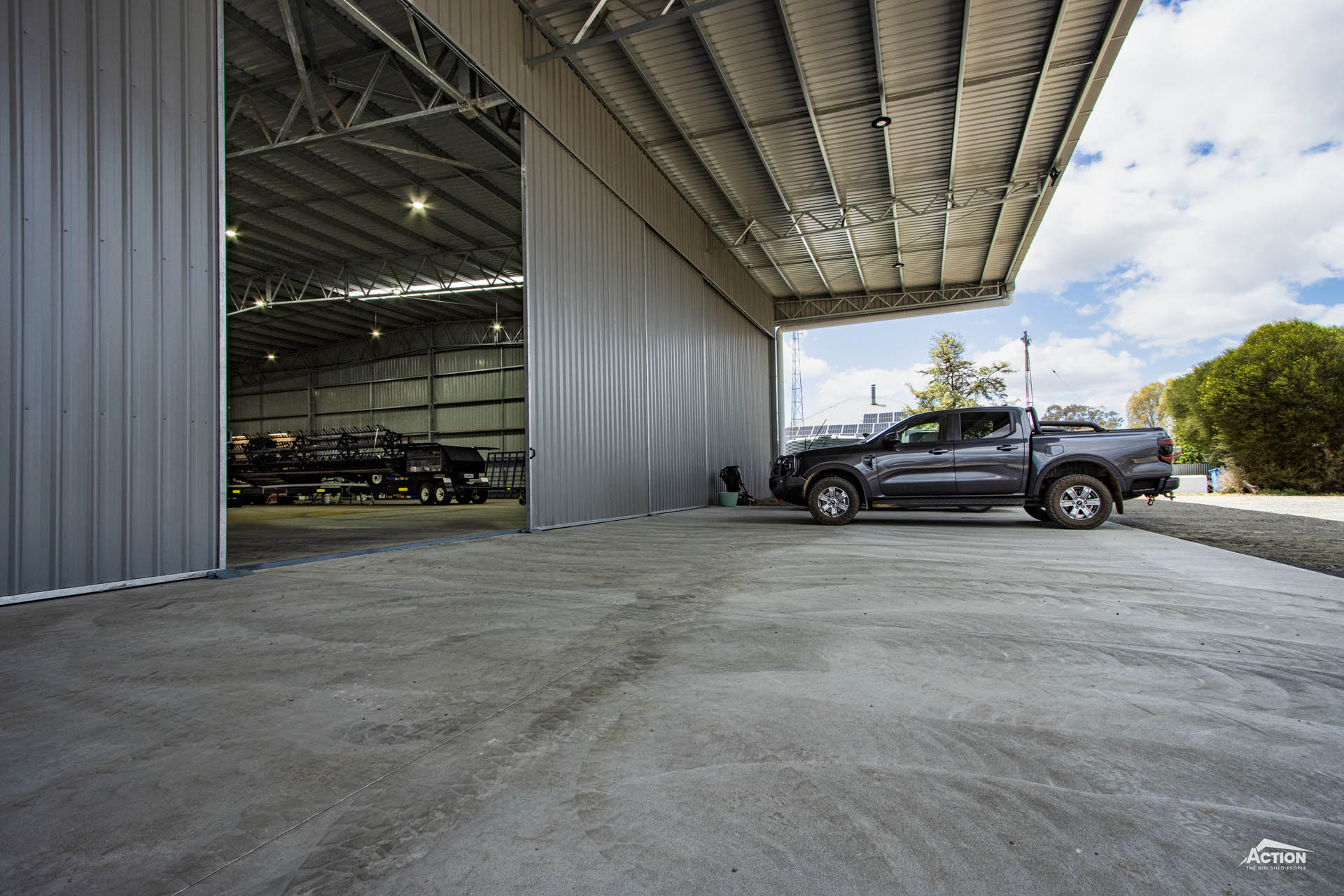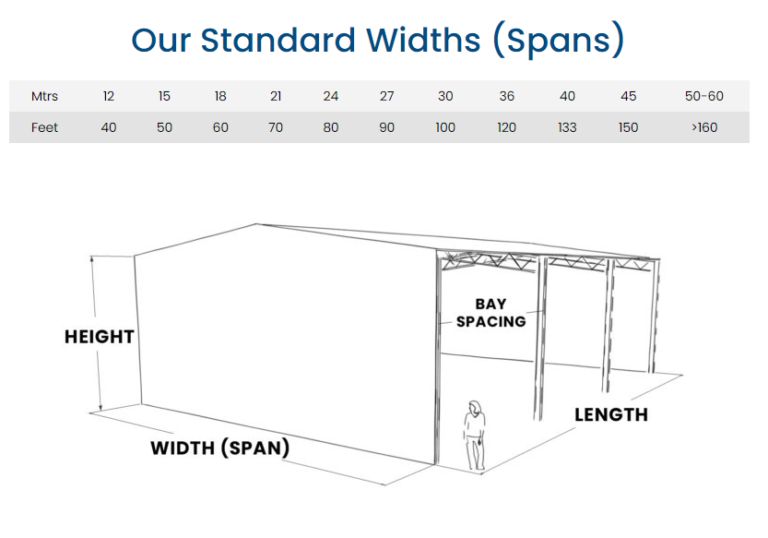Let’s talk about farm shed sizes!
Here at Action Steel, we’re known as ‘The Big Shed People.’ But how big is a “big” shed?
We are also often asked what the smallest size shed we manufacture is.
So, how small is too small?
If you are also asking these questions, then this is the article for you!
In this article, we discuss our farm sheds sizes including standard spans, popular bay spacings and best practice shed heights.
And of course, the smallest size shed that we build – and why.
Plus, in the case that your shed project is too small for us to manufacture, we have provided a list of farm shed builders that might be able to help you.
Read on to learn all about it!
Let’s start with – What Is The Smallest Farm Shed You Manufacture?
What Is The Smallest Shed You Manufacture? And Why?
Our smallest standard span is 12 metres. This is because our heavy-duty frame construction means our prices are not competitive for smaller shed builds. For example, a 9-metre span shed.
So, the smallest shed we manufacture is 16 metres long (two 8-metre bays) by 12 metres wide.
Other popular small shed sizes include:
- 18 metres long (two 9-metre bays) by 12 metres wide
- 24 metres long (three 8-metre bays) by 12 metres wide
- 24 metres long (three 8-metre bays) by 15 metres wide
While we would love to work with you, if you are planning on building a farm shed smaller than 12 metres wide it would be more cost-effective for you to choose a shed builder that specialises in sheds this size.
So, if this is the case you might find our list of small farm shed builders below, helpful.
Or, if you are building a shed 12 metres wide or bigger, then keep reading to learn about standard spans, bay spacings and more.
Small Farm Shed Builders Near You
Here are some shed builders who may be able to help you with your shed build.
Please note these are suggestions only rather than recommendations. Read our article – 10 Questions To Ask Your Farm Shed Builder – to make sure they are the right fit for your project.
- A-Line Building Systems (Australia-Wide)
- Buffalo Built (New South Wales and Victoria)
- CV Sheds (Victoria)
- Eureka Sheds (Victoria)
- Fair Dinkum Sheds (Australia-Wide)
- Olympic Industries (South Australia)
- Steeline Sheds (Australia-Wide)
Now that we have clarified the smallest shed we build, let’s dive a bit deeper into farm shed sizes.
Below, our building consultants answer some of the frequently asked questions about our farm shed sizes.
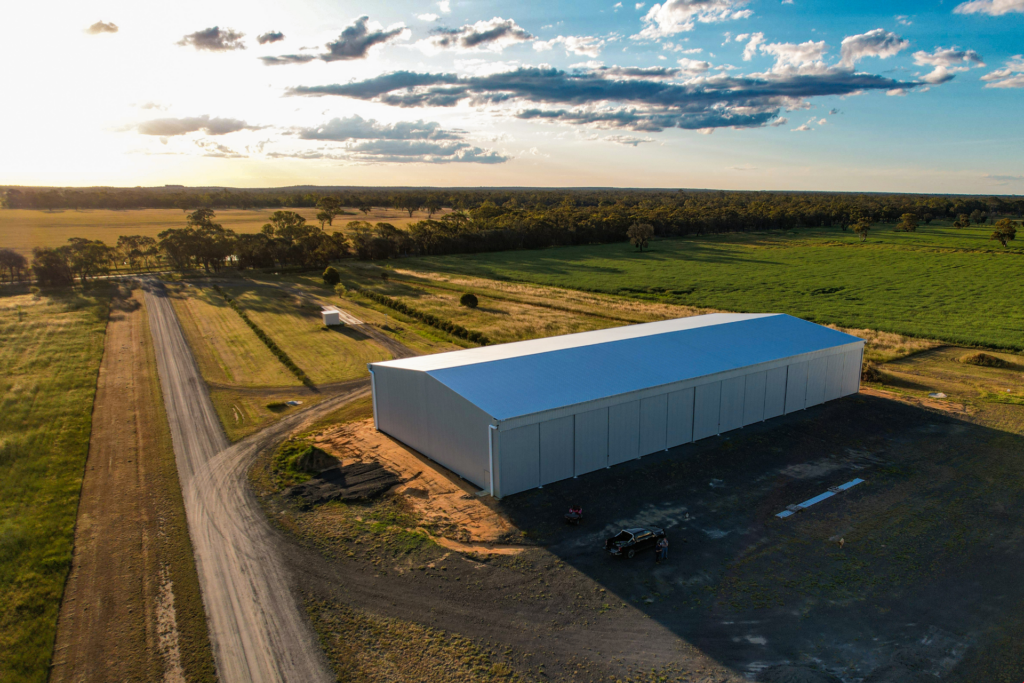
What Size Are Your Standard Spans?
Our standard spans are a range of span sizes that have been designed specifically to suit farm sheds.
Standard span sizes start at 12 metres and increase in 3-metre increments through to a 60-metre clear span.
Popular spans include 15 metres, 18 metres, 21 metres, 24 metres, 27 metres, 30 metres and 36 metres.
One of the main benefits of choosing a standard span is the cost-saving. This is because a new truss jig does not have to be set up specifically for your project.
Building a shed with a standard size span also saves time in the factory meaning your project can be manufactured faster.
We understand that these spans may not work for every project though, particularly for projects like sheep yard covers or cattle yard covers.
What Bay Spacings Are Best?
Over the last five years, bay spacings of 8 metres, 8.5 metres or 9 metres have become accepted as best practice.
This has largely been because machinery sizes have increased. And there is much more awareness around safety when loading and unloading sheds.
Bigger bays also make manoeuvring machinery easier and less stressful!
8.5-metre bays in particular work well as they are cost-effective (8.5-metre bay spacings use the same number of purlins as 8-metre bay spacings.)
And while they store the same amount of bales wide as an 8-metre bay (3 large square bales), they provide some extra ‘wriggle room’ when loading or unloading the shed.
How High Should I Build My Shed?
The height of your shed is one detail that shouldn’t be overlooked! A shed built too low is incredibly frustrating!
And it’s very difficult to increase the height of a shed once it has been built.
So how high should you build your shed?
This really depends on the type of shed you are building.
Below are some height recommendations for machinery sheds, hay sheds, grain sheds, shearing sheds and yard covers.
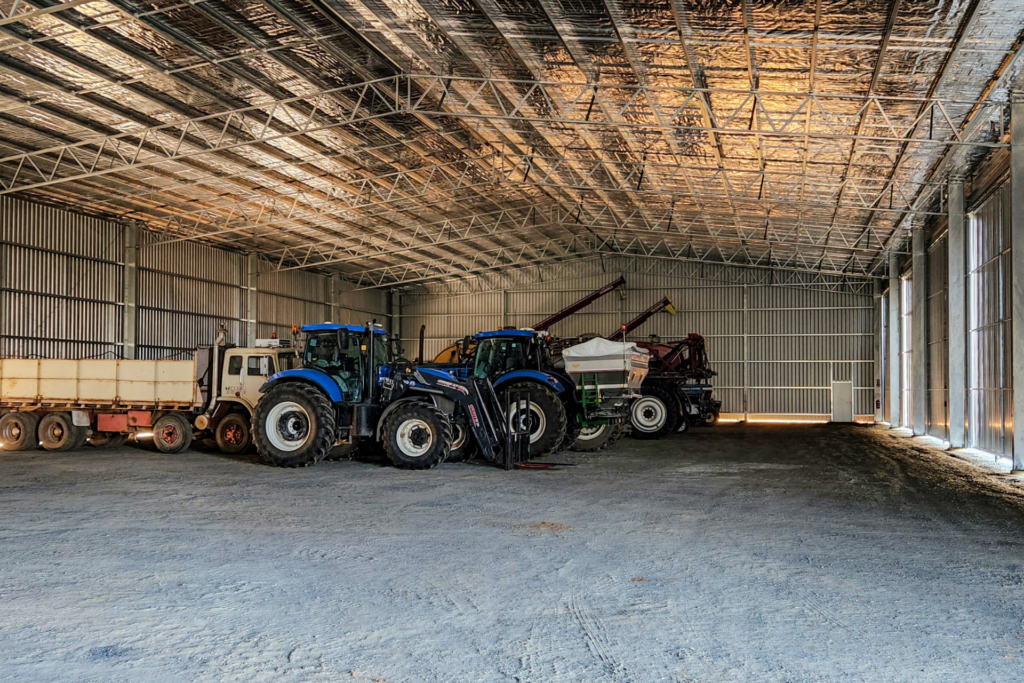
Machinery Shed Height
For machinery sheds, a height of 6 metres is usually recommended.
This provides adequate clearance for machinery like air seeders.
However, if your shed has a roller door or a sliding door you will need to increase the height by approx. 500mm to accommodate this.
Hay Shed Height
If you are building a hay shed, heights of 6 metres, 6.75 metres and 7.5 metres are common.
The equipment that you use to load your hay shed will determine what height will work best though.
For example, a front-end loader can stack up to six bales high, whereas a telehandler can stack eight bales high.
Grain Shed Height
A concrete panel wall height of three metres is the optimal wall height for grain sheds. This takes into account the angle of repose of common grains
The overall height of a grain shed is usually between 5 metres and 9 metres, depending on the overall size of the shed and the type of grain being stored.
Shearing Shed Height
When it comes to shearing sheds the most common height is 4.2 metres.
This is because most raised boards sit at 1.2 metres above the concrete wool room floor. And a height of 4.2 metres allows for a minimum clearance height of 3 metres from the top of the shearing board to the underside of the roof.
This height helps provide comfortable working conditions for the shearers. And it ensures three is enough clearance height for sliding doors onto the board.
Yard Cover Height
The eave heights of most sheep yard covers are usually within the 3-metre to 3.5-metre range.
The most common eave height for a cattle yard cover would be around 4 metres high.
These heights provide room for machinery to access the cover without allowing too much weather to come into the yards.
Please keep in mind that the depth of the trusses will impact the clearance height throughout the cover though.
So that’s a wrap on standard span sizes, bay spacings and shed heights!
Not sure what size shed would be best for your project, or looking for ideas and information?
Here are some more articles that you might find helpful:
- What Size Hay Shed Do I Need?
- What Size Machinery Shed Do I Need?
- What Size Grain Shed Do I Need?
- What Size Shed Can I Build Without A Permit?

